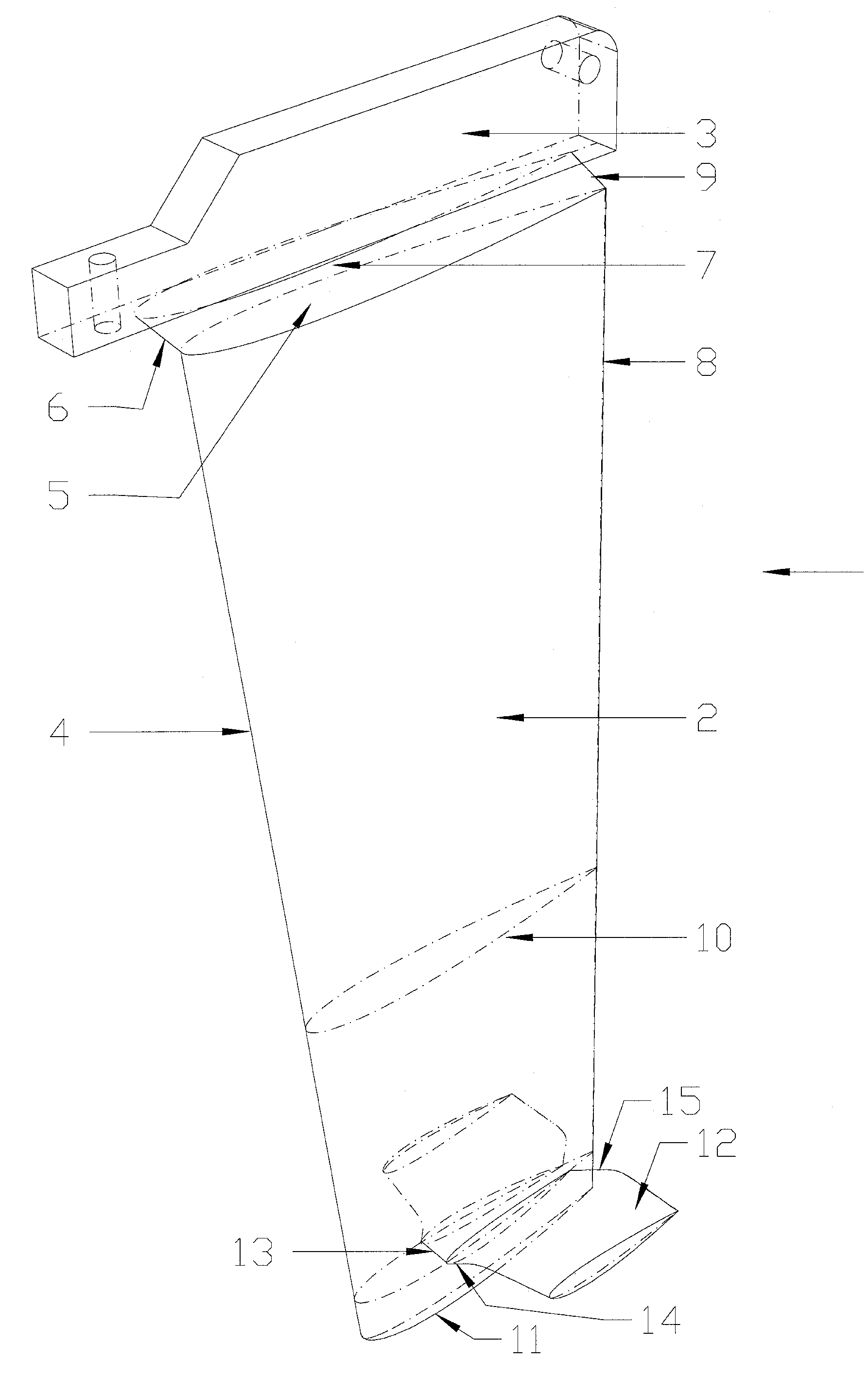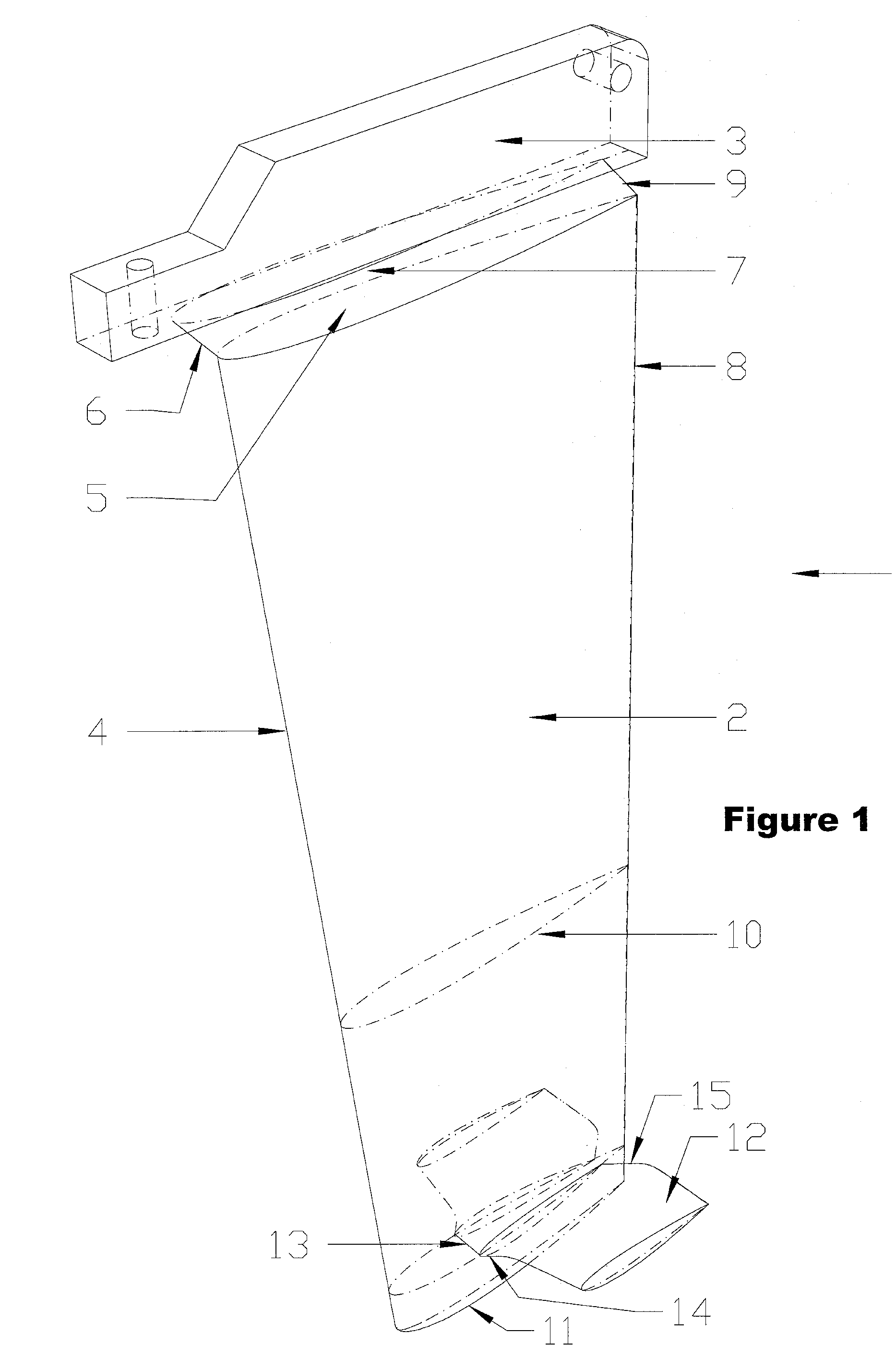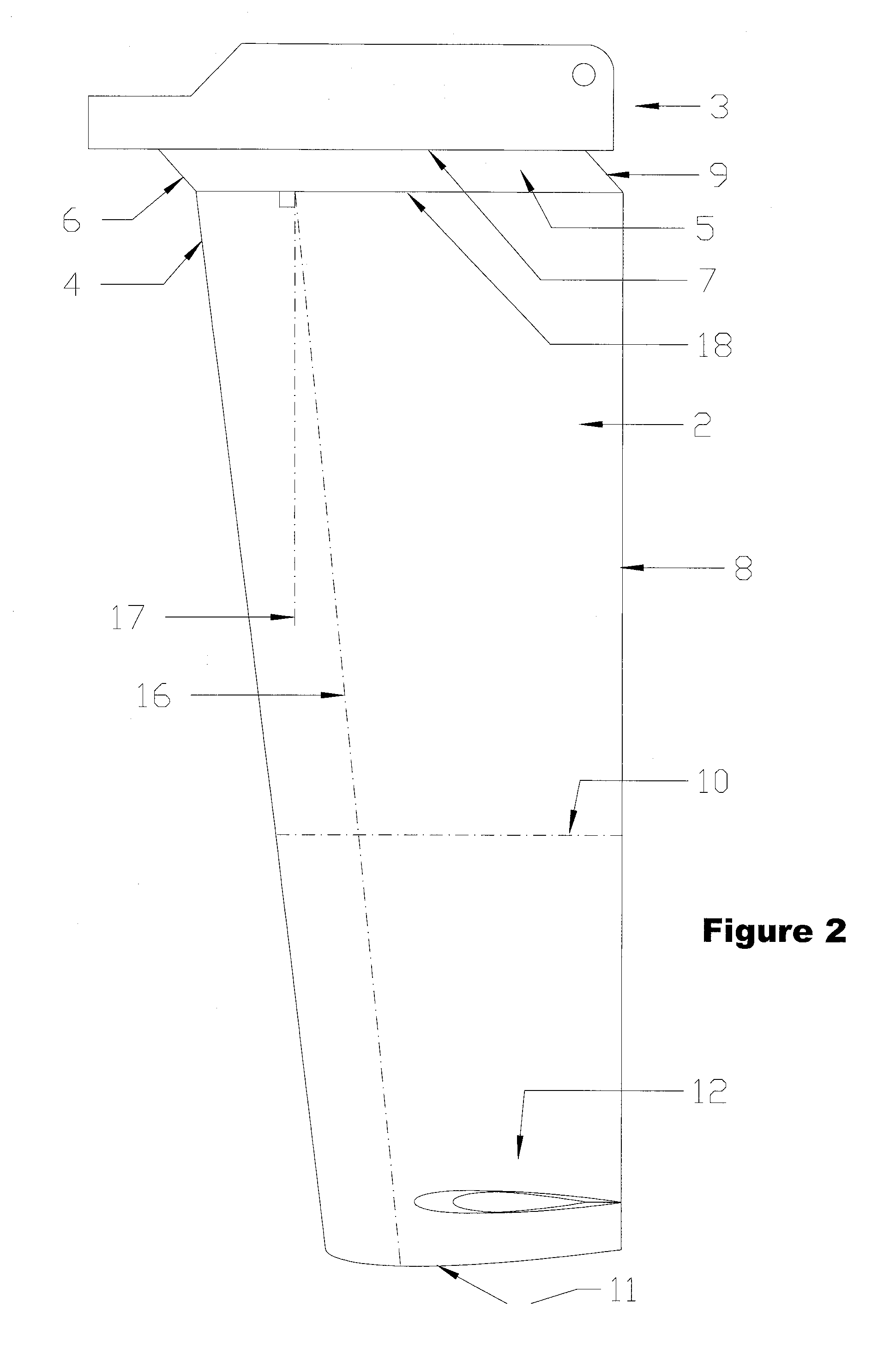High-lift, low drag fin for surfboard and other watercraft
a technology for surfboards and watercraft, applied in the direction of special-purpose vessels, vessel construction, hull parts, etc., can solve the problems of excessively large increased drag, excessive surface area of endplates, etc., to reduce the induced drag of tip-vortex, minimize stalling, and minimize stalling
- Summary
- Abstract
- Description
- Claims
- Application Information
AI Technical Summary
Benefits of technology
Problems solved by technology
Method used
Image
Examples
first embodiment
[0073]Referring now to the drawings and the characters of reference marked thereon, FIGS. 1 through 4 illustrate the present invention. FIG. 1 is a perspective view of the invention 1, exhibiting a high-aspect-ratio planform 2 of 3:1 in this embodiment, which is connected to the fin base 3. The fin base 3 is designed to fit the fin 1 into common fin boxes available on the market and commonly used in surfboards and other watercraft.
[0074]Between the high-aspect-ratio planform 2 and the fin base 3 is a forwardly displaced section of the fin 5, which forward-shifted displacement creates both a forwardly upwardly sloped projection 6 between the leading edge 4 of the fin planform 2 and the fin root 7 and, at the upper end of the fin's trailing edge 8, a cutaway 9. Although cutaways have been employed alone in some designs available, the invention combines the trailing-edge cutaway feature and the forwardly projecting root leading edge to minimize interference drag, the drag caused by the...
second embodiment
[0086]FIG. 8 is a front view of the invention in the second embodiment as a side fin 20 with a single planar winglet 22.
[0087]FIG. 9 shows a third embodiment 24 of the invention, this third embodiment with longer-spanned planar winglets 25 placed directly at the fin tip 11, and with another pair of winglets 26 placed at mid-fin span. Such horizontally arranged, larger planform, mid-span winglets increase lift in the vertical direction, reduce mid-span fin downwash, but increase drag to some extent. But the greater horizontal surface area and thus the greater vertical lift and vertical stability of this embodiment give the surfer or watercraft rider a greater horizontal lifting surface, which despite the penalty in drag, assists riders' movement forward on a surfboard from the take-off stance depicted in FIG. 10 to a point forward on the board such as in noseriding, as shown in FIG. 11. As a rider moves from the rear of the board toward the front, the tail of the board tends to lift ...
third embodiment
[0088]Still referring to FIG. 9, the winglet placement directly at the fin tip 11 has an important safety benefit. Typical surfboard fins that have a high taper ratio get very thin at the tip, and can cause injuries similar to a blunt spear when the board is thrown onto the surfer or vice versa. Waves pounding against the board can drive the tail into the surfer causing fin injuries, and surfers can be thrown by waves onto the upraised fins of overturned boards, directly onto the fin, casing injuries. The placement of the winglets at the fin tip, on the other hand, protects the surfer somewhat from such injuries. Although the winglets themselves are smaller than typical fin tips, the winglets are arranged in the same plane as the surfboard, mitigating the force with which a wave can throw the board onto the surfer, and the force with which the surfer can strike the board, because the board on edge presents less surface to the coming wave, or when fallen upon while on edge, sinks and...
PUM
 Login to View More
Login to View More Abstract
Description
Claims
Application Information
 Login to View More
Login to View More - R&D
- Intellectual Property
- Life Sciences
- Materials
- Tech Scout
- Unparalleled Data Quality
- Higher Quality Content
- 60% Fewer Hallucinations
Browse by: Latest US Patents, China's latest patents, Technical Efficacy Thesaurus, Application Domain, Technology Topic, Popular Technical Reports.
© 2025 PatSnap. All rights reserved.Legal|Privacy policy|Modern Slavery Act Transparency Statement|Sitemap|About US| Contact US: help@patsnap.com



